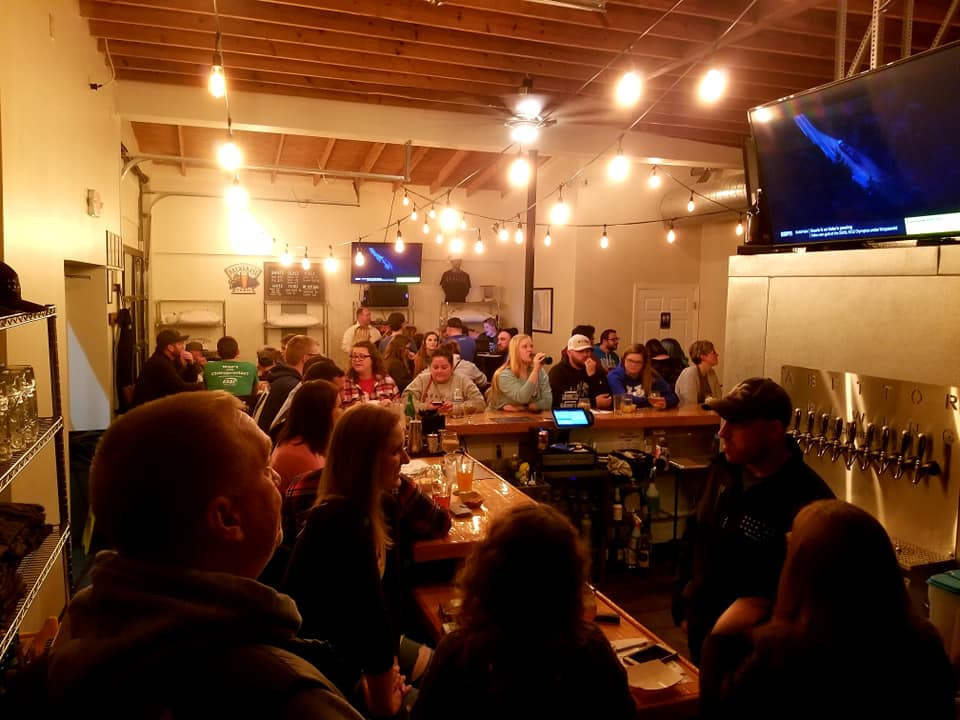
Since it seems like there’s a new brewery closure in the news every day now, it’s time we take a look at what’s going on and what you can do to stay in business.
Every single brewery in the US — all 10,000 of them — has their own unique story. Each defines success by their own yardstick and each has a different reason to exist. Which makes offering generalizing statements about the overall industry and the success or failure of craft beer at large to be a monumental challenge. You’ll always leave space for the rare story of any individual brewery. The story of your brewery may already be the anomaly that’s growing while the industry is struggling. If not, I hope we can change that.
I’ve been in the industry for 13 years, I’ve written a book about brewery business and I’ve interviewed over 50 failed breweries, successful ones, distributors, retailers and homebrew shops. All this has given me a good sense of the state of the industry and has taught me to look at the numbers.
Too many breweries. Too few distributors. Not enough shelf space for your packaged beer. Bar/restaurants with too few tap handles. Burnt-out consumers. Skyrocketing input costs/labor costs/facility costs. Flat to no production/sales growth in the industry. Interest rates out of control. A general lack of education of the brewer labor pool.
Those are all legitimate problems for any beer businesses in 2023. But before we can begin to address them, we have to admit that an even bigger problem is that so many people talking about the business of craft beer aren’t qualified to do so. Whenever I post in owner groups or talk to industry professionals, I invariably get comments back that spotlight a lack of understanding of business metrics, macroeconomics and even common sense. Even people who have fairly important roles in their respective jobs from owner to distributor either don’t understand the business they’re in or are incentivized to pretend everything is on the right path. Or like some religious fanatic, they simply believe craft beer is profitable and growing by refusing to look at the data and the facts.
I have actually been told:
“We’re just in a maturing market.”
“San Diego has XXXX breweries so we can support 5-10X more than we have in our town.” “Collaboration and Specialization will save the industry.”
“Brewery XYZ just opened a new taproom so they’re making money”
“10,000 breweries isn’t too many – there are still towns without one”
“If we can just get a little bit of that (insert successful brewery name here) money, we’ll be fine”
The truth is that profitability is exceedingly rare in this industry. Margins are so slim to be virtually unmanageable by all but the most savvy of CFOs. Managing supply chains versus cash flow while maintaining a consistent supply of finished beer on time and at a high level of quality is too much for one or two production employees to handle efficiently. Before they can stumble over that, they have to name the beer, design the label and position the branding in a place and at a price point where it will actually sell. Seasonal fluctuations in sales challenge the homebrewer-turned-business owner’s limited ability to see the future. And without professional forecasting, you’re simply hoping. And hope is not a strategy.
75% of the breweries in the US make less than 1,000 BBL of beer each year. Because of all the new breweries and limited growth on output, the average market share per brewery from 2014-2020 cut in half. 87% of the beer bought, drunk and recycled in the US in 2022 was NOT a craft beer.
From 2020-2022 the US craft brewery market lost 1,000 breweries, a 30% increase from the previous three years and a 3X increase from the three years before that. We only had 1,700 US breweries in 2010. No matter what financial or historical metric you use, the craft beer market is unhealthy. And closings will continue, likely at a much faster pace while the market attempts to find some kind of equilibrium.
So what do we do to prevent YOUR Damn Brewery from closing?
Every book I read, interview I do and business plan I read teaches me new angles and principles about where profitability’s hiding in the beer industry. While I’ll continue to learn and adapt what I know, here are seven things I know that you need to do right now:
- Get a firm grip on your facility expenses today. If the lease you signed on your building left you vulnerable to rent increases that you can’t afford, renegotiate or move before it becomes a problem, which it certainly will. I know you’re excited that the value of your house doubled in the last half-decade but I can assure you it won’t feel so hot when you find out the building you lease did the same thing. Now might be the time to close the entire production side and liquidate the assets — it will be much harder to do when thousands of closed breweries have their equipment on the market. Maybe move to a smaller tasting room and a contract brewing model. Maybe you leased/bought 20,000 square feet and have struggled to meet capacity. Now could be the time to lease the space you don’t need or condo it out and sell it. Get creative before you get facility poor.
- Stop wasting money on production. Take a look at your lineup — are you producing the most profitable beer you can? Payroll, ingredients, batch size and recipe are all potential problems. Even setting fire to your cash flow by overpaying for cleaning supplies and CO2 can be the difference between positive and negative come 12/31/23. And If the only revenue and attention you’re getting is with beer so expensive to produce that you have tiny margins on it, then your business model is wrong and you’re vulnerable. There are styles of beer that are cheap to make that will sell volume in your market — you need to be making them. If you make less than half the margin on a beer that sells more than twice as fast you come out ahead. Get ahead.
- Stop investing in growing your distribution. New markets might work for a short period but if you’re paying a rep $50,000/year to sell $100,000/year through your distributor, then you lose. If your plan is that it will grow to 120K so you can break even, let me be the first to tell you that it won’t. Not in the next few years. Now is the time to pull out of markets you’re losing money in, not investing in growth that won’t materialize. The more crowded each market gets, and they’re all getting more crowded, the less incentive any distributor/retailer has to focus on some brand from somewhere else. Stay where you are and dig in deeper.
- Make your product mix make money. Where and how you sell matters a lot. You can’t just make a bunch of beer, spray and pray it to the market and play defense by refilling whichever channel empties first. There is a correct allocation of package versus draft, in-house versus distribution, one distributor over another and even keg sizes. Fire up a spreedsheet and figure out which one sells for the highest price/ounce with the quickest depletion rate. Then focus on growing that and make sure your team buys into the change. That may mean you sell less cans at retail and leave more for your tasting room. It may mean you drop out of a market because that particular distributor will only buy half barrels. Sometimes making money means telling people no.
- Make your tasting room something truly amazing. People don’t want to drink whatever beer at a whatever place anymore. You and your entire team have to wow them. If your model calls for a tasting room, then it needs to be comfortable, exciting and fun. And every single team member needs to be on board — there’s no room for customer service mistakes anymore. If the only people taking a first date to your tasting room are disheveled 25-35 year olds, then you need to make a dramatic change. Hire an architect, a designer and some entertainment. New beer releases are getting less and less attention — the majority of beer drinkers already have a favorite and aren’t looking for a new one. When deciding what to change, the worst person to ask about your tasting room is you. Get outside opinions that you can trust and make your place worth a lot of visits on a regular basis. And, yes, you are in direct competition with the retail accounts you sell to and your neighboring breweries — get over it, they already have.
- Seek out strategic partnerships. Your brewery’s brand needs to have big support and even bigger capitalization. If you’re not working with a line-of-credit with a bank or investor equal to at least half your annual expenses, you’re in trouble. If your distributors aren’t fans for your brewery, seek out other options. Your tasting room needs the support of local groups, organizations and a diverse fan base. Lines out the door on release day, while likely not possible anymore, won’t keep you in business. Consistent bar tabs will. It may be in your best interest to consolidate with other breweries to share costs and combine energies. Combine forces, buying power, shipping, distributor relations and facility expenses and you might save enough to make some. Are you overworked and underpaid (duh?) — then think long and hard about bringing on an actual partner. You can keep your paycheck, as long as you’re doing a good job, and just split the profits.
- Take a hard look at why you do this. Quite a few of the breweries I’ve interviewed started as an expression of the art of the owner. Profit wasn’t really the point. Craft beer has always had a counterculture flavor to it, which is part of why each of us are so passionate about it. And if that’s why you pull on your X-tra Tuffs then you may want to reconsider bringing on a partner who will focus on commercial viability. Or, maybe, you should think hard about selling completely and giving yourself the freedom to just make beer. The industry doesn’t have room for esoteric and bespoke vanity projects anymore. If you’re OK with continuing to invest money every year to keep your brewing hobby, you’ve got the freedom to make that decision. Just know what you’re after and make sure it scratches whatever itch you’re feeling.
The most important thing is to stop losing money. I know this sounds obvious but I also know the majority of breweries are losing money annually. The bleeding is likely to get much worse. In fact, it really has to if we’re ever going to pop this pesky little bubble we find ourselves in. I obviously have low expectations for the broader craft beer industry but that doesn’t mean you can’t manage to make a success story.
So look at the facts, tighten up your budget, work smarter and do everything you can to keep your damn brewery alive. I honestly wish you the best and am happy to help in any way I can.




Be the first to comment